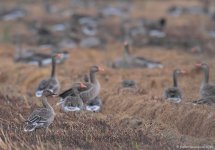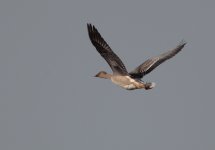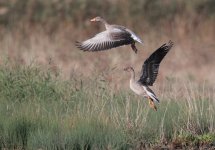PedroNicolau
Well-known member
Hey everyone,
Currently there is a bit of a lack of understanding about which taxa have occurred in Portugal, and I would like to hear some opinions on one of the birds which has occurred in the past.
I attach the best pictures of the bird taken by Pedro Marques.
Video:
https://www.youtube.com/watch?v=chT84xS7C0g
Other photos can be found here:
https://ebird.org/checklist/S32332091 (flight silhouette comparison with Greylags)
https://ebird.org/checklist/S32379166 (feeding with greylags)
This bird appears to be rather controversial. Any opinions?
Currently there is a bit of a lack of understanding about which taxa have occurred in Portugal, and I would like to hear some opinions on one of the birds which has occurred in the past.
I attach the best pictures of the bird taken by Pedro Marques.
Video:
https://www.youtube.com/watch?v=chT84xS7C0g
Other photos can be found here:
https://ebird.org/checklist/S32332091 (flight silhouette comparison with Greylags)
https://ebird.org/checklist/S32379166 (feeding with greylags)
This bird appears to be rather controversial. Any opinions?
Attachments
Last edited:






